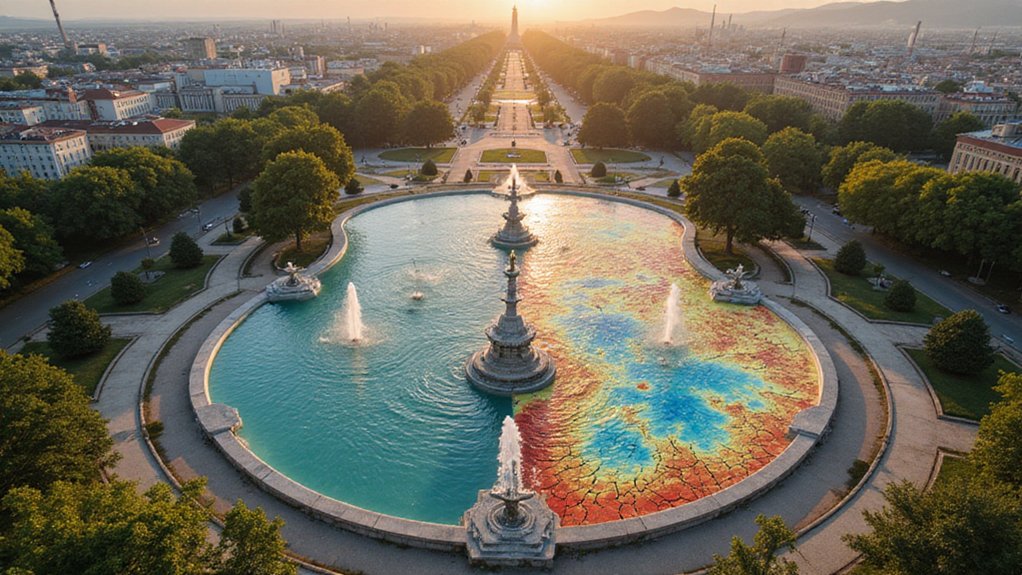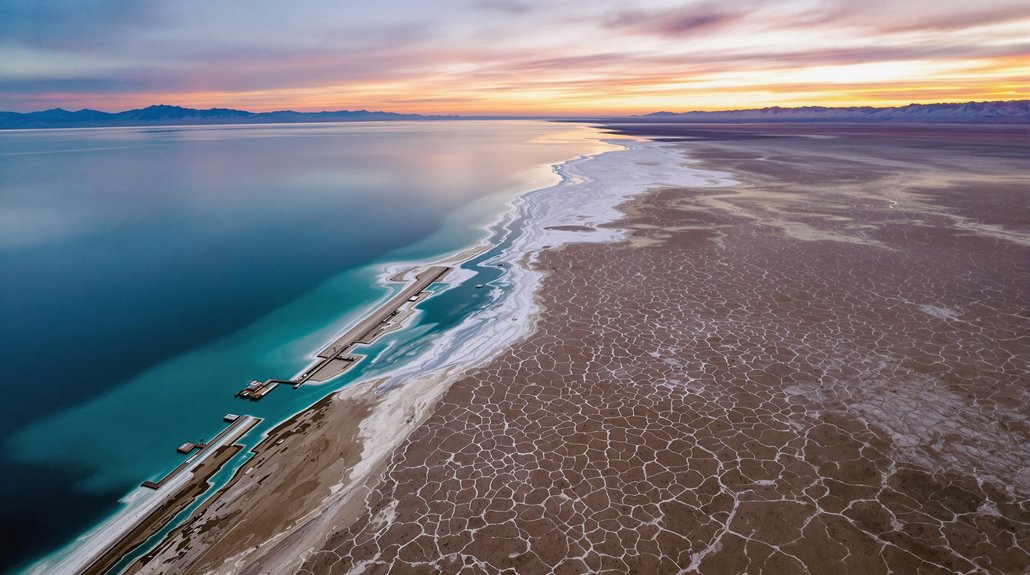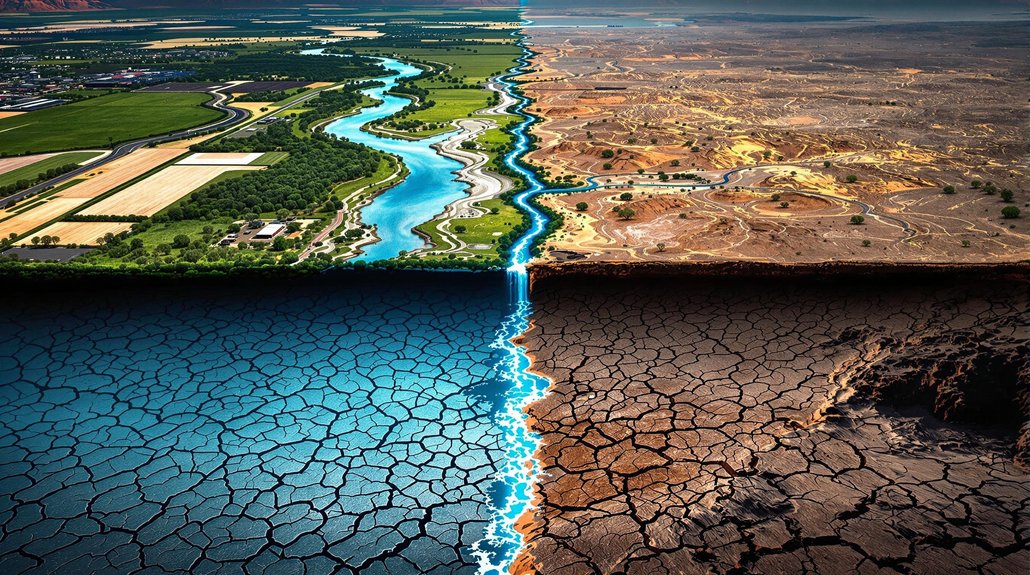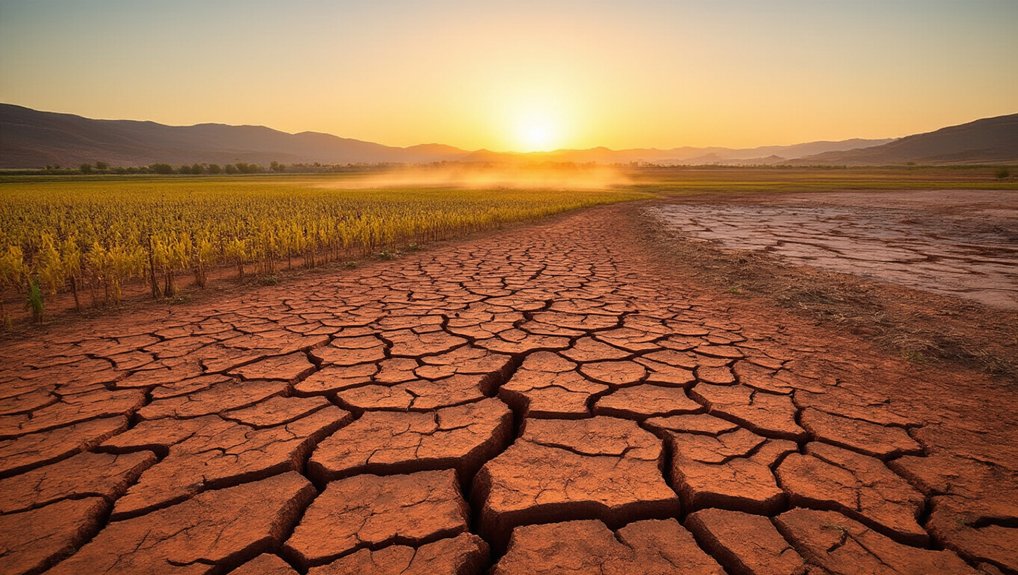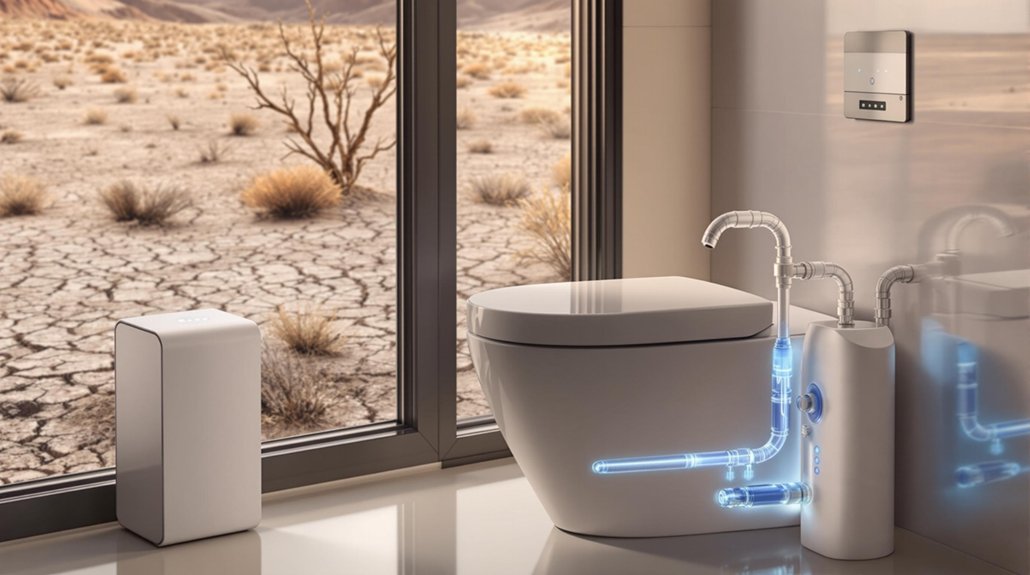While European capitals worry about their Instagram-worthy fountains and manicured parks, Brussels just dropped a reality check: cut water use by 10% or face the consequences. The European Commission’s first-ever efficiency mandate comes as 38% of EU citizens already deal with water scarcity. Only 40% of surface water bodies even qualify as “good” status anymore.
The numbers are brutal. Water shortages threaten industries worth €192 billion right now—semiconductors, data centers, renewable hydrogen, EV batteries. These sectors could hit €1 trillion by 2030, assuming there’s enough water to keep them running. That’s a big assumption. Surface water scarcity ranks as the euro area’s biggest economic threat, and extreme drought scenarios aren’t some distant nightmare anymore. The ECB’s analysis shows 72% of firms across the euro area critically depend on ecosystem services, representing three-quarters of all corporate bank lending.
Climate change isn’t waiting for bureaucrats to catch up. Water demand will triple by 2030 while 29% of EU territory already faces water stress. The math doesn’t work. Europe needs closed-loop water systems, purification tech, and digital monitoring tools yesterday. These technologies could save €3 billion annually and create 13,000 jobs, but implementation moves at typical EU speed—glacial. The WMO warns temperatures will stay at record levels for the next five years, accelerating water scarcity across the continent.
Some regions get it. Fifteen areas across Austria, Finland, France, Germany, and Sweden boast the lowest pollution levels, according to the EU Zero Pollution Dashboard. They’re the teacher’s pets in Brussels’ new water conservation classroom.
Meanwhile, agriculture keeps polluting water and soil like it’s 1950, despite being included in every holistic water resilience strategy document. Geothermal energy could provide a sustainable alternative with its minimal land use compared to other renewable energy sources while helping reduce water-intensive cooling needs of conventional power plants.
The European Commission and European Investment Bank promise water security investments. The EIB doubled its climate target to 50% by 2025, which sounds impressive until you remember they’re playing catch-up with a crisis that’s already here.
European water legislation got deemed “fit for purpose” in recent evaluations—bureaucrat-speak for “good enough, we guess.”
The EU Green Deal includes water security in its climate-neutrality roadmap, demanding action across agriculture, industry, and households. But roadmaps don’t fill empty aquifers.
European capitals need to choose between their decorative fountains and functioning economies. Brussels made that choice clear: slash consumption or watch €1 trillion evaporate along with the water supply.
References
- https://www.ecb.europa.eu/press/blog/date/2025/html/ecb.blog20250523~d39e3a7933.en.html
- https://www.cleanenergywire.org/news/brief-28-may-25
- https://environment.ec.europa.eu/news/how-clean-my-region-which-eu-capitals-are-cleanest-2025-03-03_en
- https://watereurope.eu/wp-content/uploads/2025/02/WE-Position-Paper-Water-Resilience-Strategy_.pdf
- https://www.nature.org/en-us/what-we-do/our-insights/perspectives/europe-water-secure-future/
